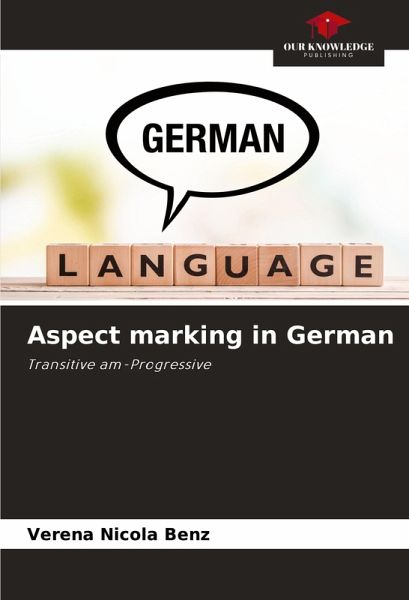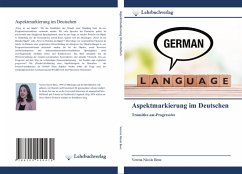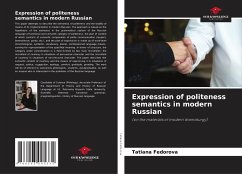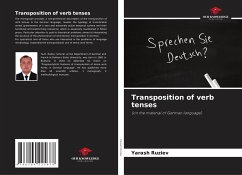
Aspect marking in German
Transitive am-Progressive
Versandkostenfrei!
Versandfertig in 6-10 Tagen
45,99 €
inkl. MwSt.

PAYBACK Punkte
23 °P sammeln!
"Peter is ironing": The am progressive construction can be used to express the progression of an action. For many speakers of German, it has become part of everyday language usage, but opinions are divided on the question of the position in which an object can be used in conjunction with the construction: "Peter is ironing his shirts" or "Peter is ironing his shirts"? This depends on various factors, which were examined as part of an empirical data collection on the acceptance of object positions in am-progressive constructions: the type of object, areal contrasts (Swiss German and Lake Consta...
"Peter is ironing": The am progressive construction can be used to express the progression of an action. For many speakers of German, it has become part of everyday language usage, but opinions are divided on the question of the position in which an object can be used in conjunction with the construction: "Peter is ironing his shirts" or "Peter is ironing his shirts"? This depends on various factors, which were examined as part of an empirical data collection on the acceptance of object positions in am-progressive constructions: the type of object, areal contrasts (Swiss German and Lake Constance Alemannic/Swabian language area) and sociolinguistic influences (age and school context). With the further development of morpho-syntactic construction, the book deals with a current topic. The am-progressive on the way to complete grammaticalization - the counterpart to the English progressive? The (re-)establishment of an aspect category in German - Pennsylvanian German as a model? These aspects are discussed alongside the question of the standard linguistic recognition and productivity of the phenomenon.












